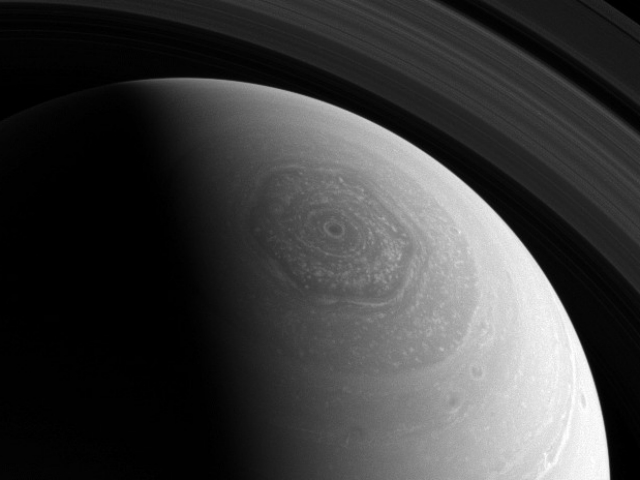ADVERTISEMENT
Filtered By: Scitech
SciTech
Saturn's hexagonal jet storm could swallow the Earth—twice!
By TJ DIMACALI, GMA News

On February 4 (PHL time), NASA released this amazing photograph of a hexagon-shaped storm atop Saturn's north pole, taken some 2.5M km (1.6M mi) away by the unmanned Cassini-Huygens spacecraft.
The storm is so big that it could easily fit two Earths within its 30,000-km length, with room to spare.
Decades, maybe centuries old
It is also unusually long-lived, by Earth standards: whereas a storm on Earth lasts only a matter of days, Saturn's hexagon has been spinning for years. It looks exactly the same as it did when it was first spotted by NASA's Voyager 2 space probe in 1981.
"The hexagon is just a current of air. A hurricane on Earth typically lasts a week, but this has been here for decades—and who knows—maybe centuries," said Andrew Ingersoll, a Cassini imaging team member from the California Institute of Technology in Pasadena.
Both the storm's peculiar shape and its unusual longevity may be due to the fact that Saturn is a gas planet, where winds can rage unhindered.
Weather, interrupted
"Weather patterns on Earth are interrupted when they encounter friction from landforms or ice caps. Scientists suspect the stability of the hexagon has something to do with the lack of solid landforms on Saturn, which is essentially a giant ball of gas," remarked NASA's Jet Propulsion Laboratory in a press release.
In 2010, researchers at the University of Oxford were able to recreate the hexagon shape in the laboratory and concluded that it was a natural occurence. They pointed out that the phenomenon was well-known in the field of fluid dynamics, and has even been observed—albeit very briefly—in hurricanes on Earth. — TJD/VC, GMA News
More Videos
Most Popular




